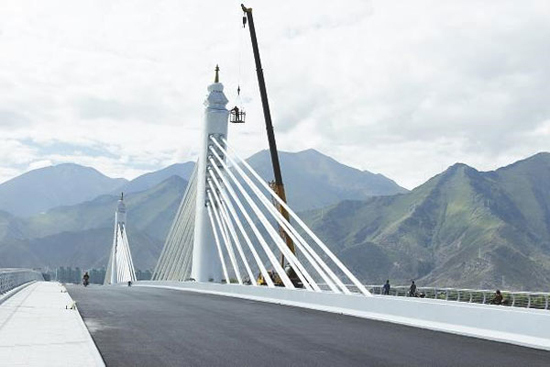Expanding the City
|

|
|
Lhasa’s Nachen Bridge is open to traffic on November 27, 2013.
|
Lhasa first took shape as a city in the 17th century. In 1950 it had a population of merely 300,000 and an urban area no larger than three square kilometers. There were dirt roads and no sewers. Today urban Lhasa covers an area of over 60 square kilometers, 20 times bigger than 60 years ago.
Cao recalled that when he was a child, the main landmark in Lhasa was the Post and Telecommunication Office, and east of the building was nothing but croplands. “The so-called city proper referred to Jokhang Monastery and the Potala Palace. If you rode a bicycle, you could soon go around the whole city,” Cao said.
In 2011 the municipal government moved its office to the eastern suburbs of the city. On its heels came more businesses, residents and facilities. On the western side, the urban area has expanded across the Lhasa River to join with Doilungdeqen County on the other side of the river, where a new district has arisen to become the city’s second administrative center.
There are nearly 100 hostels and restaurants at Xianzu Island Resort by the Lhasa River, which is about two kilometers away from the Jokhang Monastery and the Potala Palace. On the other side of the river is the Princess Wencheng stage. Since its premiere in August, 2013, more than 210,000 people have seen this grand drama of Tibetan Opera, folk singing and dancing, set amid natural scenery.
There is a large construction site east of downtown Lhasa, which will soon become Tibet’s largest educational center. According to Jigme Namgyal, Lhasa’s vice mayor, the facility, at an investment of RMB 3.6 billion, will cover an area of 270 hectares upon completion, and 17 primary, secondary, professional and special education schools have already chosen to set up campus here. It will receive students later this year.
“In the past many families preferred to send their children to study in other areas,” said Qizhalha, Party secretary of Lhasa. “The construction of the educational center offers a new choice for local people.”
We recommend:
